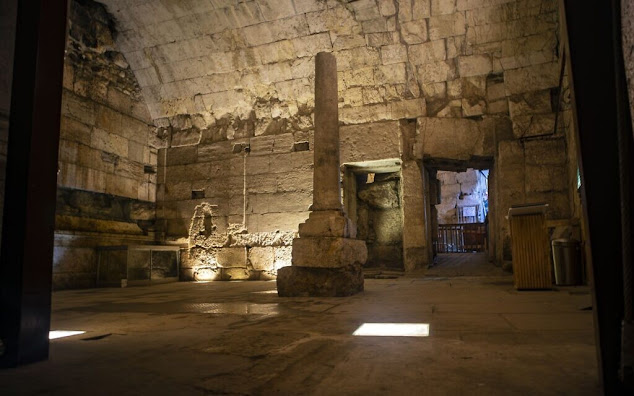“This is, without doubt, one of the most magnificent public buildings from the Second Temple period that has ever been uncovered outside the Temple Mount walls in Jerusalem,” said excavation director Dr. Shlomit Weksler-Bdolach in an IAA press release on Thursday.
Built circa 20 CE, the Roman-era structure stood off a main drag leading to the Temple Mount and was used as a triclinium, or dining room, for notable members of society on their way to worship, according to the IAA release. Originally constructed with an ornate water fountain and decorative Corinthian capitals, the striking edifice underwent a series of structural changes in its 50 years of use prior to the 70 CE destruction of the Second Temple, Weksler-Bdolach told The Times of Israel.
The massive structure will soon be open to the public as part of the Western Wall Tunnels Tour, which has been rejigged to create different paths and experiences, based on several new routes that cut through thousands of years of history, through today’s modern use of part of the tunnels as prayer and event halls.
What archaeologists do know is that during its 50 years of occupation, said Weksler-Bdolach, the large public structure was separated into three different spaces, the fountain was taken out of use, and what appears to be a ritual bath or mikveh was added, just prior to the destruction of Jerusalem.
Despite the clear Roman influence in the structure’s architecture, Jerusalem at this time was still a culturally Jewish city, said Weksler-Bdolach. The decorations discovered in the spaces — a sculpted cornice bearing pilasters (flat supporting pillars) — didn’t include graven images, banned by the Torah.
She said the hall was likely used by city, versus Temple, officials who wanted to impress their guests.
“Visitors to the site can now envisage the opulence of the place: the two side chambers served as ornate reception rooms and between them was a magnificent fountain with water gushing out from lead pipes incorporated in the midst of the Corinthian capitals protruding from the wall,” said Weksler-Bdolach in the press release.
The photos are impressive.

 Elder of Ziyon
Elder of Ziyon




















.jpg)




